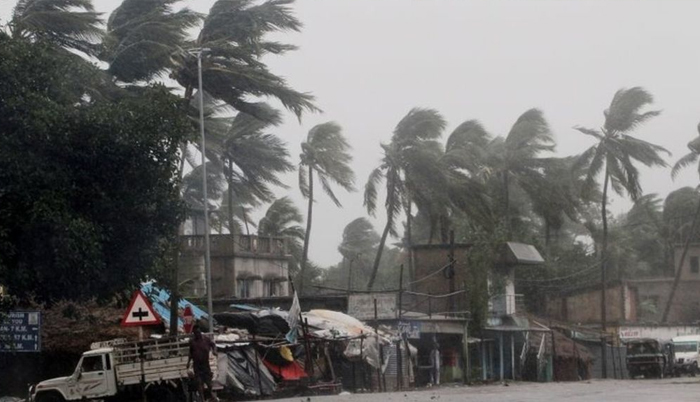
NEW DELHI/DHAKA, May 22 (NNN-AGENCIES) — Cyclone Amphan has made landfall in eastern India and Bangladesh, killing at least 15 people as it lashed coastal areas with ferocious wind and rain.
Trees were uprooted and homes toppled in both countries, including in the Indian city of Kolkata in West Bengal.
Nearly three million people were evacuated – most of them in Bangladesh – before the severe storm hit.
The storm is the first super cyclone to form in the Bay of Bengal since 1999. Though its winds have now weakened, it is still classified as a very severe cyclone.
“Our estimate is that some areas 10-15km from the coast could be inundated,” said Mrutyunjay Mohapatra, the head of India’s meteorological department.
Amphan began hitting the Sundarbans, a mangrove area around the India-Bangladesh border home to four million people on Wednesday afternoon, before carving north and north-eastwards towards Kolkata, a historic city that was the capital of the British Raj.
It was moving with winds gusting up to 185km/h . Amphan is expected to move further into Bangladesh and later Bhutan.
Meteorologists warn there could be up to 300mm more rainfall to come, which could increase the risk of flooding and deadly mudslides.
Satya Narayan Pradhan, director general of India’s National Disaster Response Force, said the impact had been “fairly devastating”, especially in poor areas.
Kolkata residents said it was the worst storm they had experienced in decades. They spoke of flooded homes, electricity transformers exploding and power cuts.
Earlier, a Bangladesh Red Crescent volunteer helping villagers to evacuate became the first fatality after the boat he was in capsized in strong winds, the organisation said.
Bangladesh has reported four other deaths.
In India, media reported 10 fatalities, including a child in the state of Orissa (also known as Odisha), who was killed after the mud wall of his family’s home collapsed.
India and Bangladesh are using schools and other buildings as temporary shelters – but they need more space than usual in order to house people while maintaining social distancing.
Police in West Bengal, which along with Orissa is expected to be the worst-hit part of India, said that people were unwilling to go to the shelters because they were afraid of contracting Covid-19.
Officials in Bangladesh fear it will be the most powerful storm since Cyclone Sidr killed about 3,500 people in 2007. Most died as a result of sea water surging in.
India’s weather department had predicted storm surges as high as 10-16 feet (3-5 metres). The rising of sea levels in this way can send deadly walls of water barrelling far inland, devastating communities.
The cyclone comes as tens of thousands of migrant workers continue to flee cities for their villages during India’s lockdown to curb the spread of coronavirus. West Bengal and Orissa are among the Indian states seeing large numbers return.
Orissa cancelled trains and some district officials asked the state government to accommodate the migrants – many of whom are walking home – elsewhere until the storm passes.
Although they are not in the direct path of the storm, there are fears for hundreds of thousands of Rohingya refugees who fled Myanmar and live in crowded camps in Bangladesh where cases of coronavirus have recently been reported. Officials said they had moved hundreds of Rohingya living on an island in the Bay of Bengal into shelters.
The UN and human rights groups are also gravely worried for Rohingya refugees who they believe could be on boats in the Bay of Bengal, and possibly in the storm’s path, after trying to flee to Malaysia and Thailand but being blocked by authorities in those countries from landing. — NNN-AGENCIES
